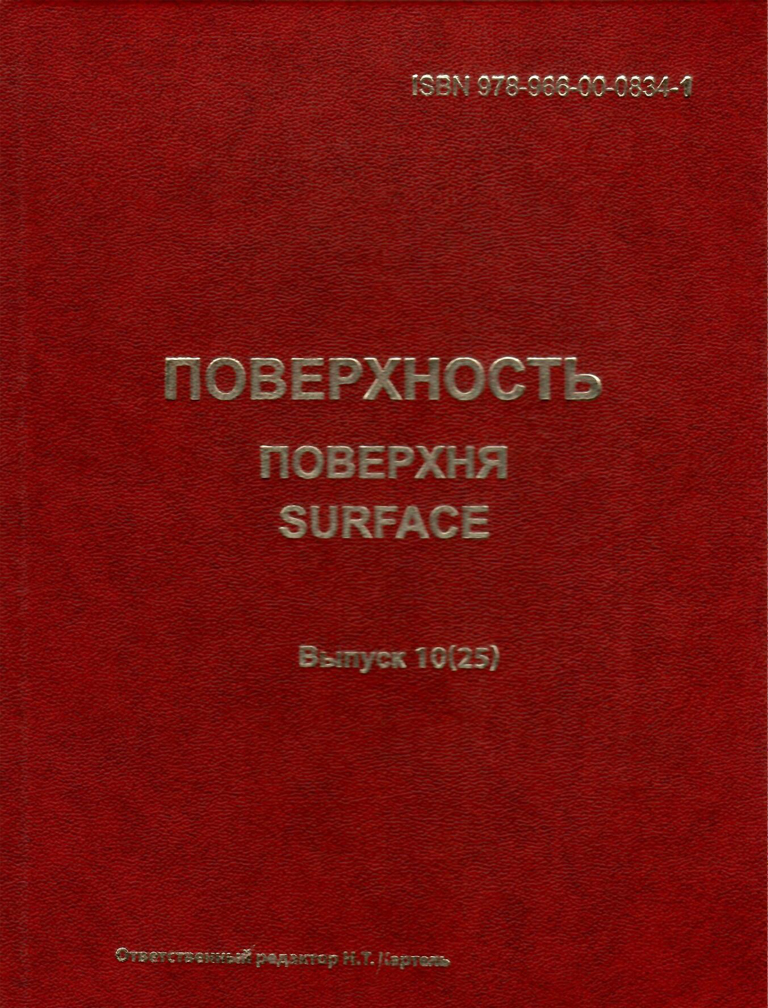Дослідження взаємодії α- і β-циклодекстрину з рядом ароматичних амінокислот у водних розчинах методом УФ спектроскопії
Анотація
Методом УФ спектроскопії вивчено взаємодію a- і β-циклодекстрину з ароматичними амінокислотами, які відрізнялись розміром молекул та будовою радикала біля a-вуглецевого атома, а також відношенням компонентів у водневому розчині з різним рН (L-фенілаланіном, L-тірозином та L‑триптофаном).
З’ясовано особливості взаємодії амінокислот з циклодекстринами при утворюванні сполук включення “a-, b‑циклодекстрин – ароматична амінокислота” типу “хазяїн – гість“ складу 1:1 з катіонною, молекулярною та цвіттер-іонною формами кислот.
Показано, що комплекси включення типу “хазяїн – гість“ утворюються за рахунок неспецифічних міжмолекулярних взаємодій, а також, слабких водневих зв'язків при зануренні бензольного кільця молекул амінокислот в гідрофобну порожнину молекули a- або b‑циклодекстрину.
Продемонстровано, що слабкий водневий зв'язок утворюється між атомом азоту аміногрупи або атомом кисню карбоксильної групи молекули амінокислоти з атомом водню первинної гідроксильної групи, розташованої на поверхні широкого краю тора, а також всередині порожнини циклодекстрину між атомом азоту іміногрупи молекули L-триптофану і атомом водню глюкопіранозної ланки. Розраховано величини констант стійкості (Ks) комплексів і термодинамічні параметри утворення сполук включення (ΔG, ΔH і ΔS).
Посилання
1. Balcão V.M., Vila M.M.D.C. Structural and functional stabilization of protein entities: State-of-the- art. Advanced Drug Delivery Rev. 2015. 93: 25. https://doi.org/10.1016/j.addr.2014.10.005
2. Brewster M.E., Hora Ms., Simpkins J.W., Bordor N. Use of 2-hydroxypropyl-b-cyclodextrin as a solubilizing and stabilizing excipient for protein drugs. Pharm. Res. 1991. 8: 792. https://doi.org/10.1023/A:1015870521744
3 Serno T., Geidobler R., Winter G. Protein stabilization by cyclodextrins in the liquid and dried state. Advanced Drug Delivery Rev. 2011. 63:1086. https://doi.org/10.1016/j.addr.2011.08.003
4. Otzen D.E., Knusen B.R., Aachmann F., Larsen K.L., Wimmer R. Structural basis for cyclodextrins' suppression of human growth hormone aggregation. Protein Science. 2002. 11:1779. https://doi.org/10.1110/ps.0202702
5. Szejtli J. Introduction and general overview of cyclodextrin chemistry. Chem. Rev. 1998. 98(5): 1743. https://doi.org/10.1021/cr970022c
6. Castronuovo G., Elia V, Fessas D., Giordano A., Velleca F. Thermo-dynamics of the interaction of cyclodextrins with aromatic and alpha, omega-amino acids in aqueous solution – a calorimetric study at 25 degrees C. Carbohydr Res. 1995. 272: 31. https://doi.org/10.1016/0008-6215(95)00000-J
7. Nishijo J., TsuchitaniI M. Interaction of L -tryptophan with α-cyclodextrin: studies with calorimetry and proton nuclear magnetic resonance spectroscopy. Journal of Pharmaceutical Sci. 2001. 90(2): 134. https://doi.org/10.1002/1520-6017(200102)90:2<134::AID-JPS4>3.0.CO;2-T
8. Horsky J., Pitna J. Inclusion complexes of proteins: interaction of cyclodextrins with peptides containing aromatic amino acids studied by competitive spectrophotometry. J. Inclusion Phenom. Mol. Recognit. Chem. 1994. 18: 291. https://doi.org/10.1007/BF00708735
10. Kanle C., Holzgrabe U. Determination of binding constants of cyclodextrin inclusion complexes with amino acids and dipeptides by potentiometric titration. Chirality.2004. 16: 509. https://doi.org/10.1002/chir.20068
10. Lewis EA, Hansen LD. Thermodynamics of binding of guest molecules to alpha-cyclodextrins and beta-cyclodextrins. J. Chem. Soc. Perkin Trans. 2. 1973. 2081. https://doi.org/10.1039/P29730002081
11. Jakubke H.-D., Jeschkeit H. Aminosäuren, Peptide, Proteine (Berlin: Akademie, 1982). [in Russian].
12. Zamyatin A.A. Protein volume in solution. Prog. Biophys. Mol. Biol. 1997. 224: 107.
13. Frommel C. The apolar surface area of amino acids and its empirical correlation with hydrophobic free energy. J. Theor. Biol. 1984. 111: 247. https://doi.org/10.1016/S0022-5193(84)80209-X
14. Sverdlova O.V. Electronic Spectra in Organic Chemistry. (Leningrad: Chemistry, 1973). [in Russian].
15 Roik N.V., Belyakova L.A. The effect of β-cyclodextrin on the protolytic and complexing properties of p- aminobenzoic acid. J. phys. chem. 2010. 84(3): 486. [in Russian].
16. Singh, R. Characterization of cyclodextrin inclusion complexes – a review. J. Pharm. Sci. and Technol. 2010. 2(3): 171.
17. Maazaoui R. Applications of cyclodextrins: formation of inclusion complexes and their characterization. Int. J. Ad. Res. 2015. 3(2): 757.
18. Edelhoch H. Spectroscopic determination of tryptophan and tyrosine in proteins // Biochemistry. – 1967. – V. 6, N 7. – P. 1948–1954.
19. Lavrinenko I.A., Vashanov G.A., Ruban M.K. Analysis of the contribution of the chromophores of the side groups of amino acids to the absorption spectrum of hemoglobin // J. Appl. Spectrosc. 2013. 80(6): 907.
20 Frumming K. Cyclodextrins in Pharmacy. (Dordrecht–Boston: Kluwer: Academic Publishers, 1994). https://doi.org/10.1007/978-94-015-8277-3
21. Szejtli J. Cyclodextrins and Their Inclusion Complexes. (Budapest: Akadémiai Kiadó, 1982).





